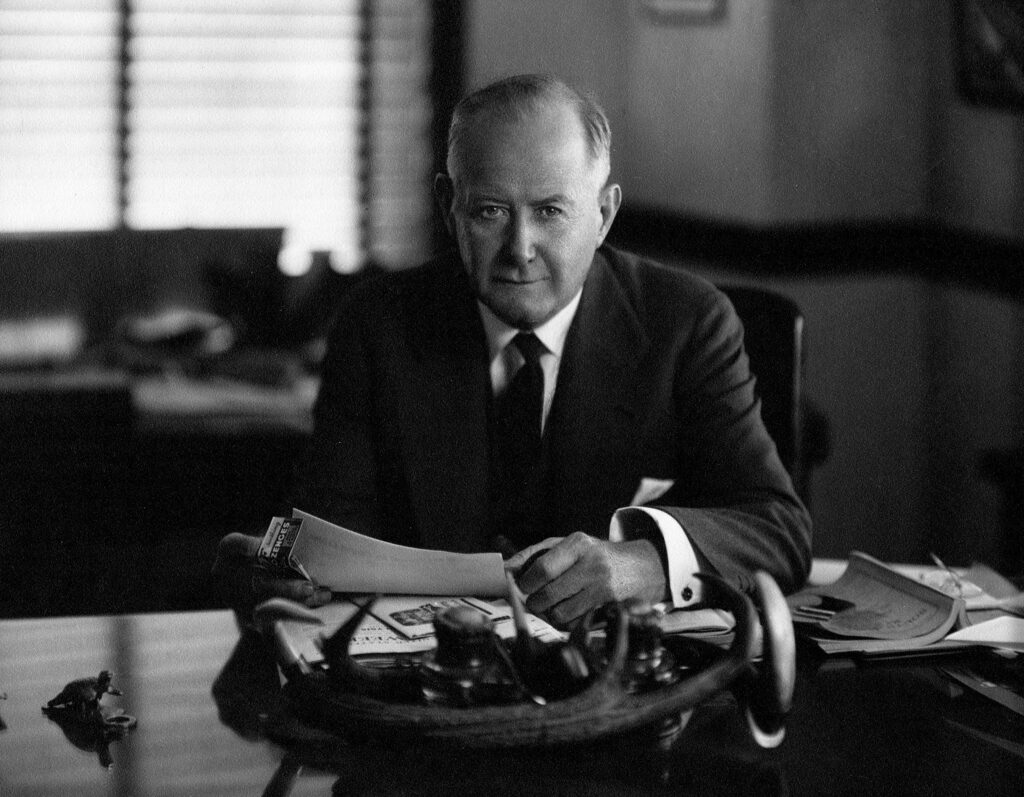John M. Slaton was Georgia’s sixtieth governor, serving two terms, in 1911-12 and 1913-15. He was also a state representative and state senator, and he practiced law in Atlanta.
John Marshall Slaton was born on December 25, 1866, to Nancy Jane Martin and William Franklin Slaton near Greenville, in Meriwether County. After the Civil War (1861-65) his father came to Atlanta, where he became superintendent of the public schools.

Courtesy of Hargrett Rare Book and Manuscript Library, University of Georgia Libraries.
Slaton attended Sam Bailey Institute in Griffin and graduated from Boys High School in Atlanta in 1880. He received a master of arts degree with highest honors from the University of Georgia in 1886 and was admitted to the bar in 1887. He then began working at the firm Glenn, Slaton, and Phillips.
Slaton was elected to the Georgia House of Representatives from Fulton County in 1896 and served until 1909. During the last four of these years he also served as Speaker of the House. In 1909 he was elected to the state senate from the Thirty-fifth District, a position he held until 1913. Serving as president of the senate, Slaton was appointed acting governor after Governor Hoke Smith was elected to the U.S. Senate in 1911. Slaton served in that capacity from 1911 to 1912, when Joseph M. Brown won a term as governor. Subsequently, Slaton was elected to the governorship in his own right and served from 1913 to 1915.
As governor, Slaton preserved the state-owned Western and Atlantic Railroad from the competition of a parallel railroad route, worked out a tax equalization program, paid teachers’ salaries in full, and established such confidence in the stability of the state that when he refinanced the maturing bond issue of several million dollars, the Georgia bonds brought a higher price than those offered by the state of New York.
Slaton’s most notable act as governor was commuting Leo Frank’s death sentence in 1915. Frank had been convicted of murdering Mary Phagan, a young worker in the pencil factory he managed, on what many saw as flimsy evidence. The judge who oversaw the case expressed doubt about Frank’s guilt and urged clemency. The case received much publicity, and Slaton personally reviewed thousands of pages of documents related to the trial. Believing that Frank had not received a fair trial and had been convicted on circumstantial evidence, Slaton commuted Frank’s sentence from death to life imprisonment just days before he left office in June 1915. A mob threatened to attack the governor at home, but a detachment of the Georgia National Guard under the command of Major Asa Warren Candler, along with county policemen and a group of Slaton’s friends who were sworn in as deputies, dispersed the mob. Slaton fled the state. Frank was abducted from prison and lynched in August 1915.
After his governorship Slaton never held another publically elected position. He served as president of the Georgia Bar Association in 1928-29 and chaired the Board of Law Examiners for twenty-nine years. He was also a member of the General Council of the American Bar Association. Slaton’s story was presented on NBC’s Profiles in Courage series in 1964 and in a television movie with actor Jack Lemmon playing Slaton.
Slaton died on January 11, 1955, in Atlanta and is buried in Oakland Cemetery.






